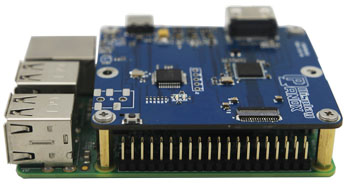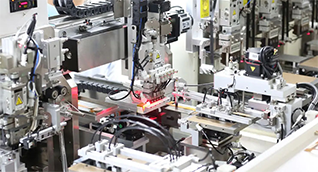
Although consumers remain highly sensitive to device pricing, affordable and mature LCD technology still holds over 80% of the VR and MR display market. However, in high-end near-eye systems such as AR and XR, Micro OLED—also referred to as silicon-based OLED, micro OLED display, or OLED microdisplay—is rapidly emerging as the preferred solution.
According to TrendForce’s latest report, Micro OLED accounted for 54% of the AR market in 2024, marking a major shift in display adoption.
1. Market Momentum: Micro OLED Gains Ground in AR/XR
Over the past two years, Apple Vision Pro has reshaped consumer expectations for VR/MR devices. Its use of Micro OLED set a new benchmark, demonstrating the advantages of micro displays in high-end near-eye experiences. Following Apple’s lead, a wave of devices featuring Micro OLED screens has been released.
Recent Product Launches Featuring Micro OLED
Thunderbird Air 3 (Oct 28):
Equipped with a 5th-generation micro OLED screen and a new “Peacock” optical engine jointly developed with TCL. It delivers 145% sRGB, 650 nits in-eye brightness, and a 200,000:1 contrast ratio.
Aoxue Vision Max (Nov 8):
A flagship MR headset incorporating dual micro OLED microdisplays reaching ~3882 PPI, achieving 4K resolution per eye. Includes a self-developed pancake optical module.
XREAL One (Dec 5):
The world’s first consumer AR glasses with native 3DoF support. Uses Sony’s 0.68-inch Micro OLED display, offering 1080p, 120Hz, and <3 ms latency.
Pimax Dream Air (Dec 24):
A lightweight VR headset using a 3840×3352 micro OLED screen at 90Hz, weighing under 200g, shipping in May 2025.
Earlier this year, multiple brands—Transsion, XREAL, Meizu Star Vision, VITURE, TCL, Skyworth, ASUS, and others—also launched micro display–based AR/VR products.
2. Why AR Products Prefer Micro OLED
A spokesperson from Thunderbird Innovation explained that AR displays are fundamentally more complex than conventional screens. They must:Blend virtual imagery with real-world environments
Deliver clear visuals on small optical surfaces
Maintain lightness and comfort for long-term wear
To meet these requirements, the industry primarily uses two optical architectures:
BirdBath Optics
Higher brightness
Better contrast
More suitable for vivid AR imaging
Waveguide Optics
More compact
Greater design flexibility
Slimmer device profile
Many leading AR products—such as Meizu’s StarV View and Thunderbird Air 2s—adopt Micro OLED + BirdBath, balancing clarity, brightness, size, and cost.
3. Micro OLED: The Only Display Technology Covering VR, MR, and AR
TrendForce concludes that Micro OLED is currently the only display technology capable of spanning VR, MR, and AR at scale.
Its advantages include:
Extremely high pixel density
Superior contrast and black level
Ultra-fast response
Compact optical path integration
When paired with BirdBath optics, Micro OLED offers one of the best cost-to-performance ratios available today. In 2024, its adoption in AR surpassed 50%, signaling strong momentum.
4. Future Outlook: Apple, Samsung, and the 2025–2026 XR Wave
Reports indicate that both Samsung and Apple plan to release new XR headsets in 2025, potentially adopting Micro OLED screens—reinforcing the technology’s growing strategic importance.
TrendForce also predicts:
Apple will launch new high-end and mainstream VR/MR devices as early as 2026.
The high-end model will likely continue using Micro OLED, with pixel density exceeding 3000 PPI.
The mainstream version may transition to glass-based OLED or LCD with LTPO backplanes to reduce cost.
5. Challenges: Cost & Manufacturing Complexity
Despite its advantages, Micro OLED still faces:
Higher manufacturing costs
CMOS + OLED hybrid manufacturing remains expensive.
Limited global supply
Few companies can mass-produce micro OLED microdisplays at scale.
Complex technical requirements
Including:
Silicon-based backplane
Precision OLED deposition
Thin-film encapsulation
High-yield wafer-level processing
Industry experts believe that as production capacity increases and costs decrease, Micro OLED will gain a decisive competitive advantage in high-end VR/MR applications.
















